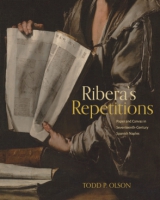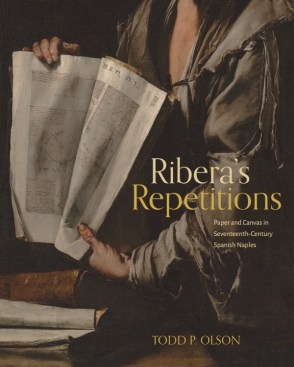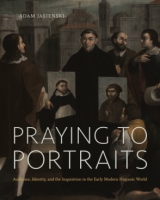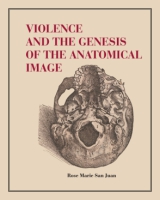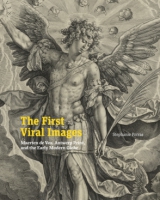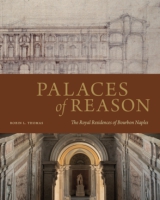Ribera’s Repetitions
Paper and Canvas in Seventeenth-Century Spanish Naples
Todd P. Olson
“Todd Olson carefully considers the diverse contexts for Ribera's artistic practice, such as empire-building, materiality, and myth, and thus assesses the complexity of Ribera’s creativity through the lenses of repetition, rotation, and experimentation. This novel, interdisciplinary study reexamines the originality of Ribera’s praxis as engaged in a visual culture shaped by science, history, and belief in early modern Naples.”
- Description
- Reviews
- Bio
- Table of Contents
- Sample Chapters
- Subjects
Drawing from a diverse range of sources, including poetry, literature, natural history, philosophy, and political history, Olson presents Ribera’s work in a broad context. He examines how Ribera’s techniques, including rotation, material decay (through etching), and repetition, influenced the artist’s drawings and paintings. Many of Ribera’s works featured scenes of physical suffering—from Saint Jerome’s corroded skin and the flayed bodies of Saint Bartholomew and Marsyas to the ragged beggar-philosophers and the eviscerated Tityus. But far from being the result of an individual sadistic predilection, Olson argues, Ribera’s art was inflected by the legacies of the Reconquest of Spain and Neapolitan coloniality. Ribera’s material processes and themes were not hermetically sealed in the studio; rather, they were engaged in the global Spanish Empire.
Pathbreaking and deeply interdisciplinary, this copiously illustrated book offers art history students and scholars a means to see Ribera’s art anew.
“Todd Olson carefully considers the diverse contexts for Ribera's artistic practice, such as empire-building, materiality, and myth, and thus assesses the complexity of Ribera’s creativity through the lenses of repetition, rotation, and experimentation. This novel, interdisciplinary study reexamines the originality of Ribera’s praxis as engaged in a visual culture shaped by science, history, and belief in early modern Naples.”
“Much more than a mere study on Jusepe de Ribera, Olson’s book is an essay on materiality, technique, and their meanings; on imperial circulation and its discontents; and on knowledge, memory, and loss. This piece of cultural history, never losing touch with the artworks and their visual particularities, is beautifully written and at times moving, reminding us of the potentialities of art history as a literary and philosophical genre.”
Todd P. Olson is Professor of Early Modern Art at the University of California, Berkeley. He is the author of Poussin and France: Painting, Humanism, and the Politics of Style and Caravaggio’s Pitiful Relics.
Contents
List of Illustrations
Acknowledgments
Introduction
1. Philosophers
2. Senses
3. Asceticism
4. Living Stone
5. Violent Rotations
6. Skin
Notes
Bibliography
Index
Download a PDF sample chapter here: Introduction
Mailing List
Subscribe to our mailing list and be notified about new titles, journals and catalogs.
